Weekly Current Affairs 1 September 2025 | Current Affairs & Hindu Analysis: Daily, Weekly & Monthly - UPSC PDF Download
Current Affairs
Lipulekh Pass Dispute
 Why in News?
Why in News?
On August 22, 2025, India announced the resumption of border trade with China through the Lipulekh Pass in Uttarakhand. This decision sparked strong objections from Nepal, which claims the area as its territory. India has countered these objections by citing historical evidence and established trade practices dating back to 1954. The ongoing dispute centers around the tri-junction region of Kalapani, Limpiyadhura, and Lipulekh, all of which are included in Nepal's official map and constitution. India, however, maintains that these claims are unfounded and has extended an invitation to Nepal for dialogue to address unresolved boundary issues.
Key Takeaways
- India resumed border trade through Lipulekh Pass, prompting objections from Nepal.
- The dispute involves historical claims dating back to the Sugauli Treaty of 1816.
- Strategic importance of the Lipulekh Pass for the Kailash Mansarovar pilgrimage and India-China trade.
- Diplomatic relations between India and Nepal are strained due to this issue.
Additional Details
- Historical Background: The India-Nepal border was defined by the Sugauli Treaty of 1816, which established the Kali River as the boundary. Nepal asserts that the river's source is at Limpiyadhura, thereby claiming Kalapani and Lipulekh as part of its territory. Conversely, India argues that the river originates further downstream, thus including these areas within Uttarakhand. Both nations reference British-era maps to bolster their claims, and the dispute has persisted since the 1960s without resolution.
- Significance of Lipulekh Pass: This strategic mountain pass connects India and China and is crucial for the annual Kailash Mansarovar pilgrimage. In 2020, India upgraded the road to the pass to enhance accessibility for pilgrims and traders, thereby strengthening its strategic presence near the Line of Actual Control (LAC) with China. The pass also facilitates trade between India and China during the summer months.
- The ongoing tensions have been exacerbated by Nepal's perception of India's actions as unilateral, increasing distrust between the two nations. Political changes in Nepal, particularly under Prime Minister K P Sharma Oli, have led to a shift towards China, complicating diplomatic relations.
The Lipulekh Pass dispute reflects broader geopolitical dynamics in the region, with implications for India-Nepal relations and the strategic balance with China. Ongoing dialogues are essential for easing tensions and resolving outstanding boundary issues.
Current Affairs
Bihar Migrants Face Mass Voter Disenfranchisement Crisis
 Why in News?
Why in News?
The recent Special Intensive Revision (SIR) of Bihar’s electoral rolls has resulted in the removal of nearly 3.5 million migrant voters. This decision categorizes these migrants as permanently migrated due to their absence during the house-to-house verification process. This action poses a significant threat to their democratic participation both in their workplace and home constituencies, highlighting a critical issue for Bihar's political and social landscape.
Key Takeaways
- Bihar has a historical background of out-migration as a survival and economic strategy.
- The SIR process misinterprets migrant absence, leading to mass disenfranchisement.
- Documentary requirements for voter registration hinder migrant inclusion.
- Resistance from host states exacerbates the political marginalization of migrants.
Additional Details
- Migrant Challenges: India's voter registration system mandates proof of residence and in-person verification, which poses difficulties for migrants living in temporary housing. For example, many do not possess the necessary documentation, leading to their exclusion from the voting process.
- Impact of Regionalism: Host states often resist the inclusion of migrant voters due to concerns over electoral outcomes, deepening their political marginalization. Migrants face a dual crisis—unable to register in their destination states while being removed from their home state rolls.
- Findings from Studies: A 2015 study by the Tata Institute of Social Sciences revealed that administrative barriers, digital illiteracy, and social exclusion create a triple burden for migrants, contributing to lower voter turnout in states with high migration.
- Seasonal Migration: About seven million circular migrants leave Bihar annually, with many returning for major festivals. The deletion from electoral rolls means many will be unable to participate in the upcoming elections.
- Cross-Border Migration: Migration along the India-Nepal border introduces additional complexities, where new documentation norms threaten citizenship and voting rights, disproportionately affecting women migrants.
To address these issues, it is crucial for India to implement portable voter identity systems and halt blanket deletions of migrant voters from electoral rolls. The Election Commission should engage in cross-verification with destination states, while local bodies and civil society groups must spearhead outreach and re-registration efforts. The migration survey model from Kerala can serve as a valuable template for other states grappling with high out-migration.
Current Affairs
Sustainable Power 1404
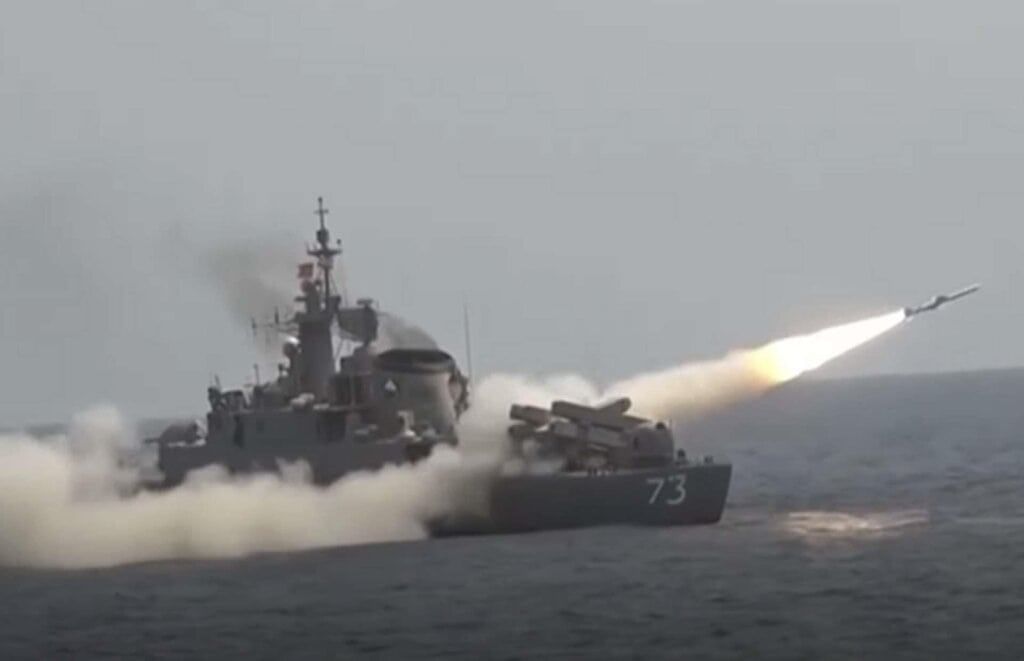 Why in News?
Why in News?
Iran has recently conducted its first significant naval exercise, named Sustainable Power 1404, following the June 2025 conflict with Israel. This two-day drill took place in the Gulf of Oman and the northern Indian Ocean, marking Iran's efforts to reassert its military capabilities and maritime strength after recent confrontations.
Key Takeaways
- The exercise involved missile launches from warships targeting sea-based objectives.
- It aims to bolster Iran's military image and enhance deterrence in the face of regional tensions.
- The drill serves as a response to previous military engagements with Israel.
Additional Details
- Context of the Exercise: The drill follows a 12-day conflict in June 2025, where Israel targeted Iranian air defenses and nuclear facilities, leading to Iranian missile attacks on Israeli cities and attempts against a US base in Qatar.
- Objectives of Sustainable Power 1404: The Iranian navy focused on improving combat readiness, enhancing command coordination, and demonstrating missile precision to showcase Iran's rapid recovery from military setbacks.
- Components and Deployment: The operation featured a range of naval assets, including surface and subsurface warships, air units, missile defense systems, and electronic warfare brigades. Notably, the frigate IRIS Sabalan and the vessel IRIS Ganaveh launched cruise missiles, emphasizing Iran's long-range strike capabilities.
- Geopolitical Implications: This exercise acts as a strategic counter to Israeli military drills aimed at Iranian nuclear facilities, signaling Tehran's readiness to project power and maintain influence in critical maritime corridors.
- Military Readiness: By conducting large-scale drills, Iran seeks to boost morale within its armed forces and deter further aggression, indicating a shift towards integrated warfare capabilities.
In summary, the Sustainable Power 1404 exercise highlights Iran's commitment to military preparedness and serves as a message of resilience amid ongoing regional conflicts. This drill may lead to shifts in the security dynamics within the region, compelling neighboring countries to reassess their naval readiness.
Current Affairs Today - Current Affairs - 2025-26
Haryana Defines Forests
 Why in News?
Why in News?
In August 2025, the Haryana government officially defined what constitutes a forest. This decision is a response to mandates from the Supreme Court of India, which called for all states to delineate forest boundaries and conduct comprehensive surveys. The state's definition is intended to meet judicial expectations but has faced criticism from environmentalists who argue that it is too limited in scope.
Key Takeaways
- The Supreme Court directed states to clearly define forests.
- Haryana's definition includes strict criteria for what qualifies as a forest.
- Environmentalists criticize the definition for being overly restrictive.
Additional Details
- SC Directive on Forest Definition: The Supreme Court has mandated that all states and Union Territories provide clear definitions of forests. This includes mapping forest areas with GIS tools, including forest-like areas, eco-sensitive zones, and community forests. Officials who fail to comply will be held personally accountable.
- Haryana’s Official Forest Definition: The Environment, Forest and Wildlife Department of Haryana defines a forest as:
- At least five hectares if isolated
- At least two hectares if contiguous with notified forests
- A minimum canopy density of 40% or more
- Legal Background: The Forest Conservation Act (FCA) of 1980 restricts the diversion of forest land without central approval. The 1996 Godavarman case expanded the definition of forest to include all forested lands, but a 2023 amendment narrowed it back to only notified forests, leading to ongoing legal challenges currently under review by the Supreme Court.
- Controversy: Critics argue that Haryana's definition, particularly the 40% canopy density requirement, excludes many dry and thorny forests, especially in the Aravalli region, which are adapted to low rainfall. The minimum area requirements are also seen as excessively high for these zones, risking development and mining encroachments in sensitive areas.
- Impact: The definition will significantly influence forest surveys and protection measures under the FCA. Proper identification of forests is essential to prevent illegal land use changes, but a narrow definition could leave ecologically important areas vulnerable.
- Ongoing Legal Process: Following the definition's notification, state and district committees are authorized to conduct forest surveys. The Supreme Court will review the findings from all states and Union Territories, with the next hearing on the FCA amendment set for September 2025, which will impact forest governance across India.
The definition established by Haryana will play a crucial role in the future of forest governance and conservation in the state, balancing ecological protection with developmental pressures remains a significant challenge.
Current Affairs
India Passes Five Key Maritime Bills 2025
 Why in News?
Why in News?
On August 25, 2025, India's Parliament enacted five significant maritime bills during the Monsoon Session. These transformative laws aim to update colonial-era regulations and enhance the blue economy, focusing on improving trade efficiency, environmental protections, and the management of coastal shipping. The reforms are aligned with the Maritime Amrit Kaal Vision 2047, which seeks to modernize India's maritime sector to meet global standards.
Key Takeaways
- The legislation introduces modern frameworks to replace outdated laws.
- Enhancements in trade logistics and environmental safeguards are a priority.
- The reforms are expected to boost India's maritime efficiency and competitiveness globally.
Additional Details
- Bills of Lading Bill, 2025: This bill modernizes documentation processes in trade, aiming to simplify logistics and minimize disputes.
- Merchant Shipping Bill, 2025: Updates regulations governing maritime operations to ensure clearer compliance with international standards.
- Carriage of Goods by Sea Bill, 2025: Adopts international frameworks, such as the Hague-Visby Rules, to streamline shipping processes and mitigate legal conflicts.
- Indian Ports Bill, 2025: Replaces an outdated law to implement modern governance and environmental safeguards for port management.
- Coastal Shipping Bill, 2025: Simplifies licensing for coastal transport, regulates foreign vessels, and encourages eco-friendly shipping practices.
- These reforms are projected to reduce logistical costs significantly, potentially saving around Rs 10,000 crore annually by increasing the modal share of coastal shipping.
The new legislation also embeds strong environmental and safety provisions, mandating ecological protection in shipping and port operations. It establishes a Maritime State Development Council to oversee national maritime planning and empowers state-level boards to manage smaller ports effectively, fostering local dispute resolution. The alignment with global maritime standards enhances India's position in international trade, supporting initiatives such as the India-UK Comprehensive Economic and Trade Agreement (CETA).
Ultimately, these reforms reflect India's strategic ambition to emerge as a global maritime powerhouse by 2047, aligning with the Sagarmala initiative, which aims to leverage over 11,000 km of coastline for sustainable transportation and community development, fostering a robust, green, and competitive blue economy.
Current Affairs
Impact of Trump’s Tariffs on US Economy
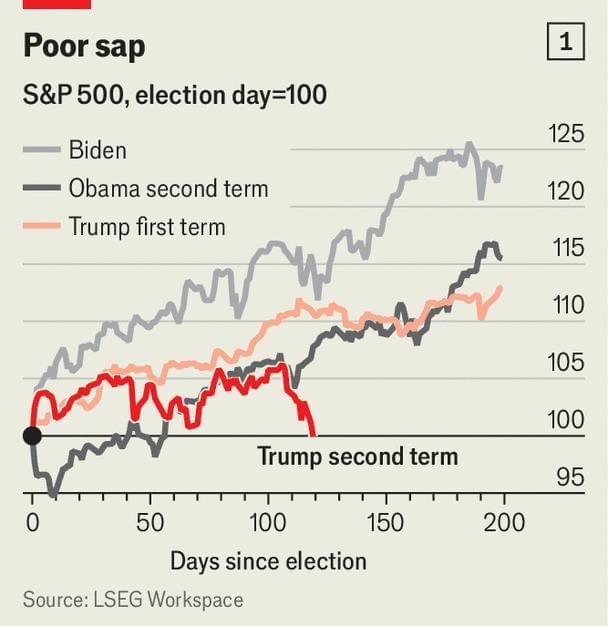 Why in News?
Why in News?
The reintroduction of tariffs by Donald Trump in 2025 marks a significant aspect of his second presidential term. Seven months into his tenure, these tariffs are reshaping the economic landscape of the United States, revealing complex effects on inflation, growth, employment, and the strength of the currency.
Key Takeaways
- Tariffs have increased the effective tax rate on US imports from approximately 2.5% to between 9.1% and 18.6%.
- US stock markets are showing mixed signals about the economy's health, with varying performances across indices.
- Inflation rates have risen, complicating monetary policy and consumer purchasing power.
- GDP growth is slowing down, with forecasts indicating a drop to 1.9% in 2025 and 1.2% in 2026.
- The US dollar is weakening against major currencies, impacting trade balances and consumer power.
Additional Details
- Reciprocal Tariffs: These are taxes on imports that correspond to tariffs from other nations, distinct from those regulated by the World Trade Organization (WTO). The increase in tariffs disrupts global trade dynamics and raises import costs.
- Stock Market Performance: While the NASDAQ 100 has experienced a significant rise, other indices like the S&P 500 and the Dow Jones Industrial Average have shown slower growth, indicating uneven impacts across different sectors.
- Inflationary Effects: Tariffs directly raise prices by taxing imports and indirectly allow domestic producers to increase prices on alternatives, leading to higher inflation rates.
- Monetary Policy Challenges: Rising inflation has hindered the Federal Reserve's plans to cut interest rates, complicating efforts to stimulate economic growth.
- Employment Trends: Job growth has slowed, and unemployment rates have increased, reflecting the broader economic strain caused by tariffs and monetary tightening.
- US Dollar's Position: The dollar's weakening against other currencies raises concerns about US economic dominance and purchasing power for consumers.
In summary, the tariffs imposed by the Trump administration are contributing to a complex economic environment characterized by rising inflation, slowing growth, and changing dynamics within the labor market and currency strength. The consequences of these policies illustrate the intricate balance between trade measures and overall economic stability.
Current Affairs
CISF Launches First All-Women Commando Unit
 Why in News?
Why in News?
The Central Industrial Security Force (CISF) has made a significant advancement in 2025 by launching its first all-women commando unit. This initiative seeks to promote gender equality within frontline security roles, highlighting the importance of women's inclusion in high-risk assignments.
Key Takeaways
- The all-women commando unit is currently in training at the Regional Training Centre in Barwaha, Madhya Pradesh.
- The first batch consists of approximately 30 women undergoing an eight-week advanced training course focused on counter-terrorism operations.
- The initiative reflects a commitment to increasing women's representation in India’s security forces.
Additional Details
- Training Programme: The training commenced in August 2025 and covers various aspects, including:
- Physical fitness
- Weapons handling
- Live-fire drills
- Rappelling
- Survival techniques
- Forest training
- The programme includes a 48-hour confidence-building module to enhance decision-making and teamwork under simulated hostile conditions.
- Following the first batch, an additional 100 women will undergo similar training, expanding the unit's capabilities.
The all-women commandos will be assigned to Quick Reaction Teams (QRT) and Special Task Forces (STF), tasked with protecting high-security locations such as civil airports and metro systems. This deployment is part of CISF’s broader strategy to enhance operational readiness while promoting gender diversity in critical security roles.
Women’s Representation in CISF
- Currently, women make up about 8% of the CISF personnel, totaling 12,491 members.
- The force aims to recruit 2,400 more women by 2026 to achieve a target of 10% female representation.
- The establishment of an all-women commando unit signifies a meaningful policy shift towards recognizing women's capabilities in traditionally male-dominated operational roles.
The CISF is the first central armed police force in India to create a dedicated all-women commando wing. This initiative marks a significant step towards the integration of women into specialized security roles, reflecting the government's commitment to gender equality and operational excellence within the security sector. Regular all-women commando courses are set to become a staple in the training calendar, ensuring the sustained involvement of women in frontline operations.
Current Affairs
Shipki-La Pass
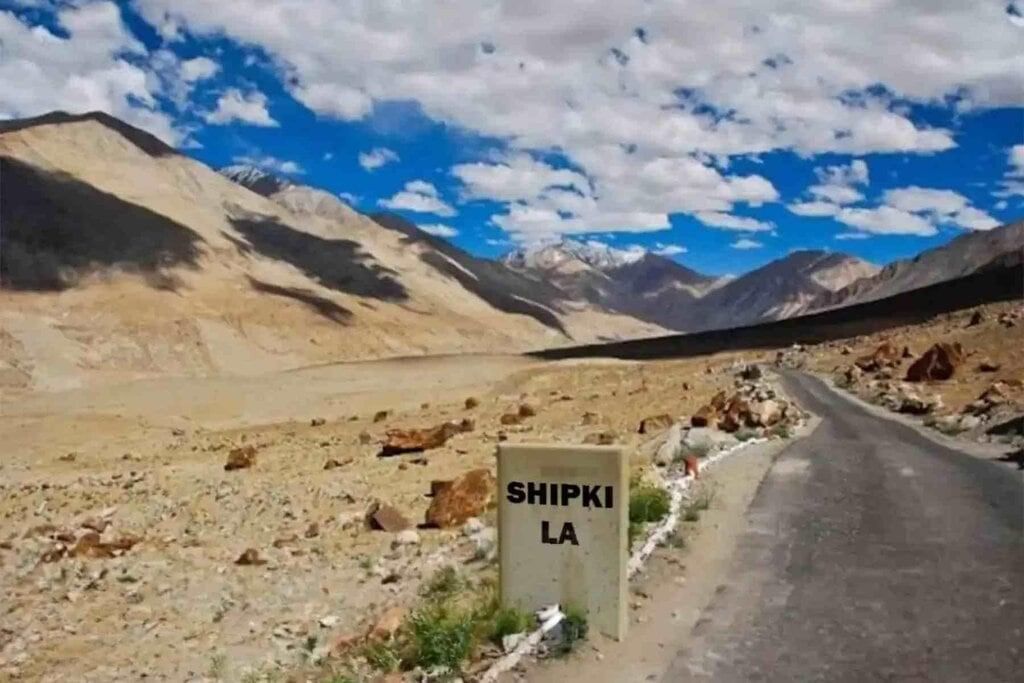 Why in News?
Why in News?
Recent developments suggest a positive evolution in the trade relations between India and China, particularly regarding the reopening of the Shipki-La trade route located in Himachal Pradesh’s Kinnaur district. This decision follows significant diplomatic engagements during Chinese Foreign Minister Wang Yi’s visit to India and is part of broader negotiations to revive trade through all designated border points between the two nations.
Key Takeaways
- The Shipki-La trade route is set to reopen, enhancing India-China border trade.
- China has agreed in principle to resume trade, following diplomatic efforts by India.
- The route has historical significance, having facilitated traditional trade between India and Tibet.
- Broader discussions are ongoing for the reopening of other routes: Lipulekh Pass and Nathu La Pass.
Additional Details
- Shipki-La Trade Route: This historic pass in the Himalayas has been a crucial link for centuries, officially recognized for border trade under the 1994 India-China bilateral agreement. Trade was halted in 2020 due to the COVID-19 pandemic, impacting long-standing economic and cultural interactions.
- The Himachal Pradesh government has actively worked towards reopening this route, with Chief Minister Sukhvinder Singh Sukhu engaging directly with the Union government to facilitate discussions with China.
- The reopening is expected to boost local economies and revive trans-Himalayan cultural exchanges, enhancing people-to-people connections.
- The Shipki-La pass may also serve as an alternative route for the Kailash Mansarovar Yatra, potentially easing pilgrimage logistics.
The next steps involve coordination between the Himachal government and the Union Commerce Ministry to finalize procedural requirements to reopen the route. Infrastructure improvements are also planned to support both trade and pilgrimage activities, ensuring efficient and sustainable operations once the route is officially reinstated.
Current Affairs
New World Screwworm Parasite
 Why in News?
Why in News?
The United States has reported its first human case of New World screwworm infestation, involving a traveler from El Salvador, identified in early August 2025. Health authorities have assessed that the risk to public health remains low, although this situation indicates a possible reemergence of a parasite that was previously eradicated in the region.
Key Takeaways
- The first human case of New World screwworm in the U.S. was confirmed in August 2025.
- The parasite was historically eradicated in the U.S. in 1966.
- Current surveillance and public awareness are crucial to managing this potential health risk.
Additional Details
- What Is New World Screwworm? New World screwworms are blue-grey blowflies that originate from South America and the Caribbean. Female flies lay eggs on open wounds or natural openings of warm-blooded animals, including humans, with each capable of laying up to 3,000 eggs in her lifespan of 10 to 30 days.
- Symptoms and Effects: Infestations result in painful wounds that may worsen over time, with symptoms such as non-healing sores, bleeding, and foul odors. If left untreated, larvae can invade critical tissues, potentially leading to severe infections and a high mortality risk.
- Historical Eradication: The U.S. successfully eradicated New World screwworms in 1966 using the sterile insect technique, which involved breeding sterile males to disrupt reproduction cycles. This technique was also effective in eliminating screwworms in Mexico and Central America by the early 2000s.
- Reasons for Recent Reemergence: New cases have been reported in countries such as Panama and Costa Rica, likely due to the movement of infested livestock across borders. Experts also suggest that the existing sterile insect technique may be less effective against current screwworm strains.
- Public Health Measures: While the current threat in the U.S. is low, ongoing surveillance and prompt diagnosis are vital. Increasing awareness among travelers and healthcare providers is essential for early detection. Improving sterile insect release programs and fostering cross-border cooperation will be key to controlling the parasite's spread.
In summary, the recent confirmation of a New World screwworm case in the U.S. underscores the importance of vigilance and effective control measures to prevent potential outbreaks and safeguard public health.
Current Affairs - 2025-26
Maruti Suzuki e-VITARA Electric Vehicle
 Why in News?
Why in News?
On August 28, 2025, India celebrated a significant advancement in green mobility with the launch of the Maruti Suzuki e-VITARA, the company's first battery electric vehicle (BEV), alongside a lithium-ion battery production facility in Hansalpur, Gujarat. This event, inaugurated by Prime Minister Narendra Modi, highlights India’s evolving role in sustainable transportation and aligns with the Make in India initiative. The e-VITARA will be produced domestically and exported to over 100 countries, marking India's increasing presence in the global electric vehicle (EV) market.
Key Takeaways
- The e-VITARA is Maruti Suzuki's debut electric SUV.
- The vehicle will be manufactured in India, emphasizing local production.
- It features two lithium-iron phosphate battery options: 49 kWh and 61 kWh.
- Exports will encompass more than 100 countries.
Additional Details
- Strategic Importance: The launch at Maruti Suzuki’s Hansalpur plant symbolizes the India-Japan industrial partnership. The lithium-ion battery facility is a joint venture with Suzuki, Toshiba, and Denso, aimed at producing hybrid battery electrodes locally, thereby reducing dependence on imports and supporting self-reliance under the Atmanirbhar Bharat initiative.
- e-VITARA Specifications and Features: The e-VITARA offers both front-wheel drive and all-wheel drive variants, equipped with modern features such as LED headlamps, 18/19-inch alloy wheels, a digital instrument cluster, touchscreen infotainment, wireless charging, JBL audio, 360-degree cameras, panoramic sunroof, and advanced driver-assistance systems (ADAS).
- Market Impact: Currently, electric vehicles represent approximately 3% of India's car sales. The e-VITARA aims to enhance EV adoption domestically and position India as a global hub for EV manufacturing. Suzuki Motor Corporation has pledged to invest ₹70,000 crore in India over the next 5-6 years, demonstrating confidence in the country's automotive sector.
- Government Initiatives: The launch aligns with various government policies that promote clean energy and industrial growth, including industrial corridors, production-linked incentives (PLI), and logistics parks, which collectively support growth in the manufacturing sector.
The e-VITARA launch represents a pivotal moment in India's automotive landscape, reinforcing the country's commitment to sustainable transport and economic growth through local manufacturing initiatives.
Current Affairs
UN Launches Global Mechanism for Cyberspace Governance
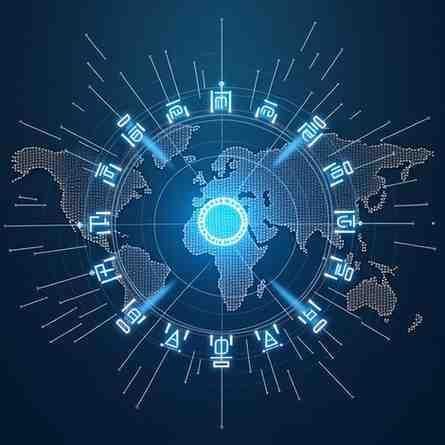 Why in News?
Why in News?
The United Nations has initiated the Global Mechanism (GM) for Cyberspace, a significant step aimed at fostering responsible behavior among states in the digital realm. This permanent international forum emphasizes norms, international law, capacity building, and confidence-building measures. Established after 27 years of intricate diplomatic efforts, the GM builds on a consensus reached by the Open-Ended Working Group (OEWG) on July 11, marking a transformative moment in global cyber governance.
Key Takeaways
- The GM aims to enhance cooperation in cyberspace and address state behavior.
- It was formed after extensive diplomatic negotiations spanning nearly three decades.
- The initiative reflects a broad consensus achieved through the OEWG, which included all 193 UN member states.
Additional Details
- Evolution of Cyber Diplomacy: Cyber diplomacy has evolved from the Group of Governmental Experts (GGE) from 2004 to 2017, which had limited participation, to the more inclusive OEWG process initiated in 2018, allowing all UN members to partake. This inclusivity has facilitated a wider consensus, including the establishment of the GM.
- India’s Strategic Role: India is positioned to play a pivotal role in shaping the future of the GM. As the largest democracy and a technological powerhouse, India possesses robust diplomatic and technical capabilities. Its involvement in OEWG negotiations showcased its commitment to inclusive governance and balanced digital sovereignty.
- Capacity Building: The success of the GM hinges on bridging the digital divide. Many nations lack the necessary capacity for effective participation in cyber governance. India's experience in capacity building, bolstered by a globally recognized IT sector, positions it as a leader in this area.
- Challenges Ahead: Despite notable advancements, several challenges persist. Political agreements need to translate into concrete behavioral changes. The enforcement of voluntary norms, the complexity of attributing cyberattacks, and ongoing geopolitical tensions pose significant hurdles to effective governance.
In summary, the establishment of the Global Mechanism for Cyberspace Governance marks a significant milestone in international cyber diplomacy, with India poised to influence its direction significantly. Addressing challenges such as the digital divide and geopolitical tensions will be crucial for the GM's success.
Current Affairs
India Releases Joint Doctrines for Armed Forces Integration
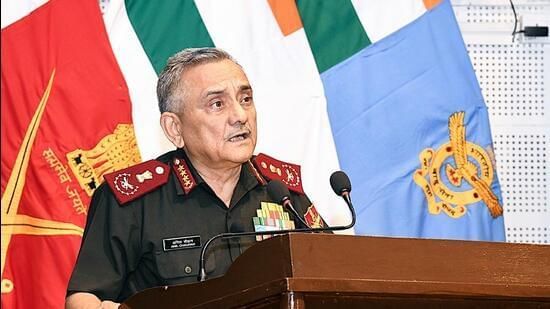 Why in News?
Why in News?
On August 29, 2025, India unveiled three comprehensive joint military doctrines aimed at enhancing integration among the Indian Army, Navy, and Air Force. These doctrines focus on Special Forces operations, airborne and heliborne operations, and multi-domain operations. This initiative is a significant step towards establishing theatre commands and modernizing operational readiness across the armed forces.
Key Takeaways
- Introduction of joint military doctrines for improved coordination among armed forces.
- Focus on Special Forces, airborne and heliborne operations, and multi-domain operations.
- Enhancement of joint training and operational effectiveness.
Additional Details
- Special Forces Joint Doctrine: This doctrine aims at fostering a common understanding, terminology, and procedures among various special forces units, including the Para-SF (Army), Marine Commandos (Navy), and Garud (Air Force). It emphasizes joint training in advanced skills to bolster interoperability while maintaining the command structure of lead services.
- Upgrading existing training schools to Joint Service Training Institutes focused on core competencies such as night operations, adverse weather conditions, electronic warfare, and precision-guided munitions.
- Airborne and Heliborne Operations Doctrine: This doctrine highlights the integration of advanced technologies and joint cooperation among airborne and heliborne forces, ensuring comprehensive training on new tactics and equipment to maintain responsive and credible forces.
- Multi-Domain Operations Doctrine: Envisions the integrated employment of military forces across various domains—land, sea, air, space, cyber, and cognitive. This framework will guide how the services will organize, plan, and execute operations together, enhancing responsiveness and synergy in modern battlefields.
- Future Outlook: The doctrines anticipate revolutionary changes in warfare, emphasizing the need for continuous adaptation of tactics and procedures to address emerging technologies and weapon systems.
The introduction of these joint doctrines signifies India's commitment to evolving its military strategies in response to modern security challenges. By focusing on technological absorption and joint training, the armed forces are being prepared for future operational demands in the 21st century.
Current Affairs
Hierarchical Reasoning Model Challenges LLM
 Why in News?
Why in News?
Recent advancements in artificial intelligence have led to the creation of a new brain-inspired AI model known as the Hierarchical Reasoning Model (HRM). Developed by researchers at Sapient in Singapore, HRM poses a challenge to the conventional architecture of large language models (LLMs) used by leading AI companies such as OpenAI and Anthropic. Despite its relatively small size and limited training data, HRM has exhibited superior performance on some of the most rigorous tests for artificial general intelligence (AGI).
Key Takeaways
- HRM mimics the layered processing of the human brain with a two-module design.
- This model outperforms traditional LLMs by using iterative refinement rather than sequential problem-solving.
- HRM achieved higher scores than its competitors on the ARC-AGI benchmark tests.
Additional Details
- Innovative Design: HRM's architecture consists of a high-level module for slow, abstract planning and a low-level module for fast, detailed computations. This contrasts with traditional LLMs which utilize chain-of-thought (CoT) reasoning.
- Limitations of Traditional Models: Chain-of-thought reasoning is data-intensive and can be inflexible, leading to latency due to stepwise problem solving. HRM addresses these issues through continuous refinement of answers.
- Performance Metrics: On the ARC-AGI-1 test, HRM scored 40.3%, surpassing OpenAI's o3-mini-high (34.5%), Anthropic's Claude 3.7 (21.2%), and DeepSeek R1 (15.8%). In the more challenging ARC-AGI-2 test, HRM led with a 5% score, compared to OpenAI's 3%, DeepSeek's 1.3%, and Claude's 0.9%.
- HRM has shown exceptional capabilities in solving complex tasks, successfully completing difficult Sudoku puzzles and optimizing paths in maze navigation.
- The success of HRM is attributed not just to its hierarchical structure, but also to an under-documented refinement process during its training, highlighting the significance of advanced training techniques.
- HRM differentiates itself from existing models like ChatGPT and Claude by not relying on linear problem decomposition, allowing for more flexible and efficient reasoning.
In summary, the Hierarchical Reasoning Model represents a significant evolution in AI design, showcasing enhanced reasoning and planning capabilities that set it apart from traditional models. Its innovative architecture and effective training processes point toward a promising future for artificial intelligence development.
Current Affairs
Myanmar Military Labels Karen National Union Terrorist
 Why in News?
Why in News?
In August 2025, the military government of Myanmar officially categorized the Karen National Union (KNU) as a terrorist organization. This designation criminalizes nearly all interactions associated with the KNU, including any contact by third parties. The KNU, a significant ethnic rebel group, has been advocating for autonomy since Myanmar gained independence in 1948. This development occurs amidst ongoing civil conflict and political instability that intensified following the military coup in 2021.
Key Takeaways
- The KNU represents the Karen ethnic minority and has been involved in an armed struggle for self-rule since Myanmar's independence.
- Despite signing a ceasefire in 2015, the KNU resumed its resistance after the 2021 military takeover.
- The military's terrorist designation complicates any peaceful activities by the KNU, including information campaigns.
Additional Details
- Military Government's Justification: The military claims that the KNU has significantly harmed public security, infrastructure, and civilian lives. The military leader, Senior General Min Aung Hlaing, has threatened severe penalties for anyone interfering with the upcoming elections scheduled for December 2025.
- KNU's Reaction: The KNU has rejected the terrorist label, accusing the military of being the real aggressors. The group has pledged to disrupt the military's planned elections, which are widely viewed as a tool to legitimize the military's grip on power.
- The National League for Democracy (NLD), led by Aung San Suu Kyi, has been dissolved, further undermining the electoral process.
The terrorist designation not only complicates the KNU's activities but also exacerbates the ongoing civil war involving various ethnic armed groups and pro-democracy militias. The military's election law threatens severe penalties, including death sentences, for anyone disrupting the electoral process, contributing to the ongoing conflict in the Kayin (Karen) state. This situation underscores the deep-seated ethnic divisions and the widespread resistance against military rule in Myanmar.
|
38 videos|5167 docs|1089 tests
|




















